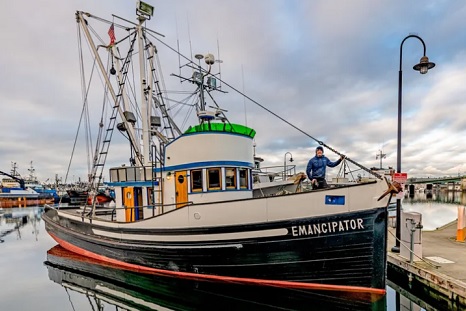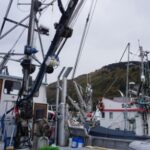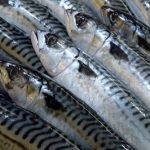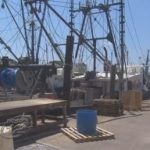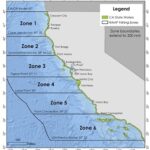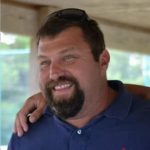Tag Archives: Puget Sound
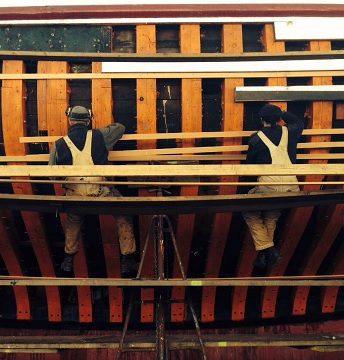
Port Townsend: Haven Boatworks expands their wake
The team of shipwrights at Haven work on all types of boats, from upkeep on commercial fishing boats to repairs on yachts and wooden sail boats. At any given time, they may have more than a dozen boats in the yard. They stay busy from mostly word-of-mouth referrals from delighted customers. Blaise Holly says that whether commercial or private, captains have a relationship with their vessels. For commercial owners a boat is their livelihood where they spend the bulk of their time. Every year or two most boats need some type of routine maintenance, like cleaning off buildup of seaweed and barnacles from the hull photos, >click to read< 15:01

Sea lions, seals might be hampering WA salmon recovery. What can be done?
State officials are now exploring whether to kill sea lions and seals in the Salish Sea and outer coast in a desperate effort to save salmon species from extinction. A new report commissioned by the state Legislature and completed by the Washington Academy of the Sciences says seals and sea lions are likely impeding salmon recovery, and the full impacts of predation on salmon may not be fully understood without lethal intervention. Three mammals specifically have skyrocketed. From 1975 to 2015, the harbor seal population in the Salish Sea exploded from about 6,000 to around 50,000. And California sea lions rose from 50,000 to somewhere around 300,000 on the West Coast of the U.S., according to the Northwest Indian Fisheries Commission. Populations of Steller’s sea lions living around Washington, Oregon and California steadily rose from an estimated 15,000 in 1982 to more than 43,000 in 2019. >click to read< 09:14

On the Puget Sound, the Women Whose Lives and Work Revolve Around Salmon
In the town of Bellingham, Washington, everyone knows when the salmon run come fall. Shimmery silvers and chum salmon break the chilly water’s surface with their heads, as they move through the Puget Sound and tributary rivers to their spawning grounds. Locals buzz, telling one another when they’ve seen them, admiring the fish on their journey. But for Ellie Kinley, this isn’t just a fall spectacle. She thinks about these fish 365 days a year. There’s a strong and sometimes overlooked community of fishing families here. The Lummi have the largest tribal fishing fleet in the nation, according to Kinley; the port is also home to fishing families, native and non-native alike, who use Bellingham as their home base between fishing trips to Alaska and California. Photos, >click to read< 17:44

Jury awards $595,000 in damages to Lummi Nation for 2017 fish spill
Cooke Aquaculture accidentally released tens of thousands of nonnative Atlantic salmon in 2017, threatening native Pacific salmon, and the Lummi Nation’s traditional reliance on them. In 2017, a floating industrial salmon farm in the Northwest’s Puget Sound broke loose, releasing tens of thousands of Atlantic Salmon into the ecosystem. The nonnative salmon, raised in crammed industrial scale fish pens and considered a threat to native Pacific salmon, quickly swam throughout the bay. The Washington Department of Ecology later found that the farm owner, Cooke Aquaculture, the largest privately owned salmon-farming agribusiness in the world, had neglected to take care of its equipment. >click to read< 13:43
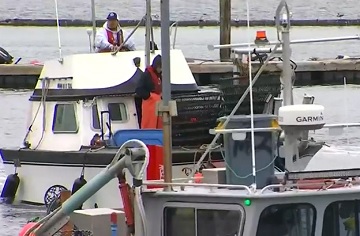
Tribal fishermen claim WDFW targeting tribal members in new age of Fish Wars
It’s been more than five years since two Tulalip Tribe members were taken into custody at a marina in Everett; but what led up to that moment is still a debate that’ll be settled in court. What’s clear is that regardless of how the court system plays out, neither side will ever see eye-to-eye. Hazen Shopbell, one of the tribal members, says it’s the new age of the Fish Wars, an era when tribal fishermen were beaten and battered for attempting to fulfill their treaty rights in Puget Sound. The Washington Department of Fish and Wildlife says what played out is a standard investigation, that two fishermen violated state laws and trafficked in illegal shellfish trade. >click to read< 08:41

This Is Where 75% Of Wild-Caught Seafood Grows (It’s Not The Ocean)
The special places where freshwater rivers mix with the salty ocean are known as estuaries. Even if you have never heard of an estuary, you probably know of a couple; Virginia’s Chesapeake Bay, Washington’s Puget Sound, Florida’s Tampa Bay, and California’s San Francisco Bay are all estuaries. Estuaries are also are teeming with life-supporting nutrients. River water carries land-based nutrients into the estuary, and salt-water animals take advantage. The special features of estuaries make them an essential component of the seafood industry accounting for up to 75% of commercially-caught seafood. >click to read< 08:42

Washington Department of Fish and Wildlife Sued Over Steelhead Farming in Puget Sound
Environmental and conservation groups filed a lawsuit Tuesday against the Washington Department of Fish and Wildlife over the agency’s recent decision to allow Cooke Aquaculture to rear farmed steelhead trout in Puget Sound. The suit, filed in the Superior Court of Washington, alleges that the Washington Department of Fish and Wildlife issued a permit to allow steelhead fish feedlots, a type of fish-farming practice, to operate in the complex waterways of Puget Sound without any consideration of the consequences they would have on the environment. >click to read< 13:01
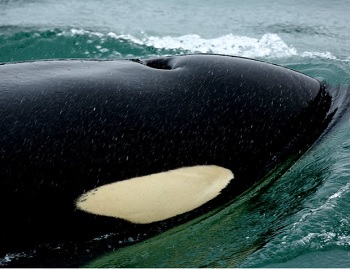
Suit targets Alaska salmon management to protect southern killer whales
The Wild Fish Conservancy filed notice on January 9, stating its intentions to sue the National Marine Fisheries Service for violating the Endangered Species Act, and jeopardizing the existence of Southern Resident Killer Whales. The Conservancy argues that an important food supply of the whales, endangered stocks of chinook salmon originating in Puget Sound, the lower Columbia River, the Willamette River, and Snake River is being depleted by the commercial troll and sport harvest in Southeast Alaska. >click to read< 20:51

Randy Babich has been fishing Puget Sound and southeast Alaska for 54 years. A lot has changed in that time.
The Paragon is a 56-foot commercial purse seiner moored at Longbranch Marina, a seagoing workhorse that dwarfs the pleasure boats around it. “I was going to be a dentist,” said the owner, Randy Babich, who just turned 70. “I went through pre-med, pre-dent. My dad always said, ‘Get into a profession.’ ” Babich grew up in Gig Harbor and “got into fishing because my family was into fishing,” >click to read< 07:16
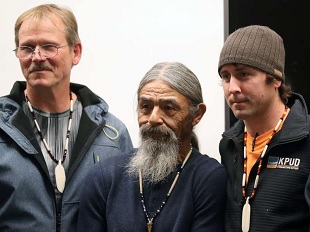
‘It’s a miracle I am here:’ Fisherman found clinging to buoy meets his rescuers
When David Sigo was dragged off his fishing boat last month and spent an hour in the cold Puget Sound before being rescued,,, The 63-year-old from Suquamish didn’t panic — though he did admit to yelling at his boat in anger right after he landed in the water — and he took steps to increase his chances of getting home alive: saving his voice until a helicopter overhead passed, directing his calls for help toward the shore along with the direction of the wind, bear-hugging a buoy with all his might. photo’s, >click to read< 15:42
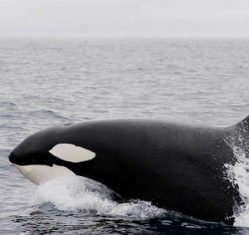
Feds seek expanded habitat protection as salmon, orcas battle climate change, habitat degradation
Advocates for the designation say it provides another layer of review and more legal protection for the whales. “We are thrilled,” said Steve Jones, spokesman for the Center for Biological Diversity,,, However, Lynne Barre, head of killer-whale protection for NOAA, said she did not anticipate big changes if the designation is approved after a public comment period, because activities such as dam operations and fishing already are subject to review by the agency for their effect on endangered species. >click to read< 13:32
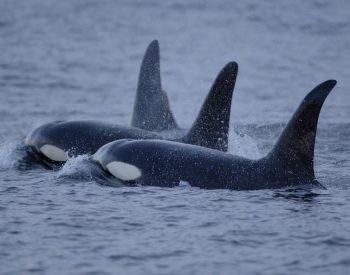
Puget Sound orcas look fatter … maybe because they’ve moved away
It appears that endangered orcas that live around Puget Sound may be moving elsewhere. Groups of southern resident killer whales aren’t showing up this year like they used to. Researchers link the scarce sightings with scarce chinook salmon, the orcas’ favorite food. Salmon runs on the river have fallen dramatically the past few years, so it looks like the killer whales are finding food somewhere else. This month, the whales were seen for just two days around San Juan Island.>click to read<19:36

California chinook returns a ‘game-changer’ – California’s chinook may explain why Southern Resident Killer Whales haven’t shown up in BC
Last week, when southern resident killer whales failed to show up in B.C. coastal waters by the end of June, as they usually do, it caused some hand-wringing among whale watchers and Washington conservationists. But if the orcas are late showing up for dinner in B.C., it may be because they were still at the buffet in California, which is reported to be experiencing one of the best chinook returns in about a decade. “I think the California return was a game-changer this year,” >click to read< 13:24
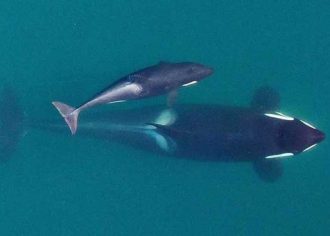
Human Population Growth Threatens Endangered Whales
The Puget Sound area surrounding the Salish Sea is expected to be home to almost 6 million more people by 2050, which would add between 33 and 150 square miles of paved area, according to the Washington Department of Commerce. “Population growth is the top challenge for conserving habitat,” Jeff Davis, assistant director of the Washington Department of Fish and Wildlife’s habitat program, said Monday at the Southern Resident Killer Whale Task Force meeting. Governor Jay Inslee convened the task force last year, asking it to provide recommendations to prevent the endangered whales’ extinction.>click to read<14:30
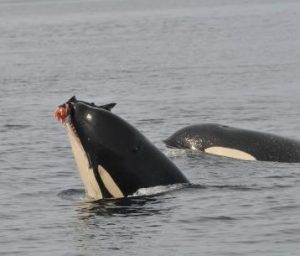
Environmental groups sue to restrict salmon fishing for Northwest orcas
The Center for Biological Diversity, which filed a lawsuit nearly two decades ago to force the U.S. government to list the orcas as endangered, and the Wild Fish Conservancy asked the U.S. District Court in Seattle on Wednesday to order officials to reconsider a 2009 finding that commercial and recreational fisheries did not jeopardize the orcas’ survival. >Video, click to read<10:09
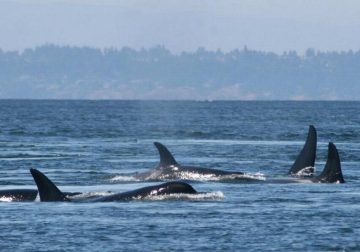
Puget Sound pollution is the culprit causing orcas’ demise
In my Feb. 3 column, I argued the real matter with the southern resident orca pods was tied to swimming in polluted waters and eating polluted fish that live in those polluted waters connecting them together. Ecologically, it’s a very complex issue. It’s a combination of many factors that affect fish and orca.,, Treated sewage discharges may contain fecal bacteria concentrations that are many times higher than state water quality standards, and even small amounts of sewage discharges over or near shellfish beds can cause enough pollution to require harvest closures, the Department of Ecology says. Really? Inadequate sewage treatment plants on and near Puget Sound are also polluting waters there. Jeff Sayre >click to read<10:09
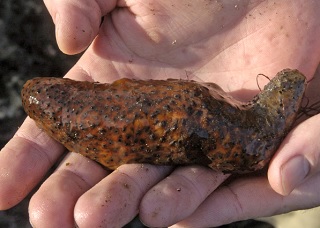
Washington man gets prison for overharvesting sea cucumbers, must pay $1.5M
The owner of a Washington seafood company has been sentenced to two years in prison for overharvesting sea cucumbers and must pay $1.5 million in restitution — the second large bust of illegal sea-cucumber trade in the U.S. West in just over a year. Hoon Namkoong, 62, was also sentenced Friday to three years of post-prison supervision. He pleaded guilty earlier this year in U.S. District Court in Seattle to underreporting the number of sea cucumbers he bought from tribal and nontribal fisheries in the Puget Sound by nearly 250,000 pounds between 2014 and 2016. His company, Orient Seafood Production, then sold them to seafood buyers in Asia and the U.S. >click to read<10:09

Impossible Choices: The Complicated Task of Saving Both Orca and Salmon
Decades of politics and foot-dragging have stymied the recovery of threatened and endangered Chinook salmon, while an iconic population of killer whales that depends on them veered toward extinction. Now, a last-ditch effort to save the whales may also be what thwarts the recovery of Chinook. The Southern Resident killer whales are dying. An extended family of 75 orcas living year-round in the sea surrounding the San Juan Islands near Seattle, their numbers never fully rebounded since aquariums that later became SeaWorld captured a third of them in the late 1960s. And there are other culprits. Cargo ships and whale-watching boats zip through the Salish Sea, adding noise that interferes with the whales’ ability to locate each other and their prey. The water they live in is toxic. The Puget Sound outside Seattle is tainted with flame retardant, and PCBs and pollutants gush from nearby rivers into the sea. >click to read<10:13
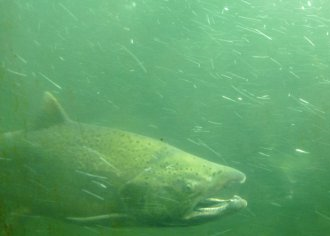
Fish Commissioner Calls For Sharp Increase In Chinook Production For Orcas
Fifty million more Chinook would be released for southern resident killer whales under a plan being pitched by a member of the Washington Fish and Wildlife Commission and which would also provide “shirttail benefits” for salmon anglers. Don McIsaac wants to release 30 million kings in four areas of Puget Sound, and another 20 million from hatcheries in the Columbia River system to help feed the starving pods. Their plight has gripped the region this summer and this past March led Governor Jay Inslee to sign an executive order directing state agencies such as WDFW to do all they can to help save the species. >click to read<20:18
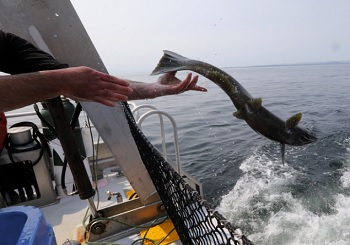
Dosed salmon, clipped fins, a ‘dinner bell’: How far is too far in helping starving orca?
The emergency effort to save a critically ill orca whale is an experiment without precedent. An international team of scientists is piloting techniques to treat a wild, free-swimming orca, one of the largest predators on Earth. The effort includes serving up live fish pumped with medicine and playing a unique tone that one researcher likened to a “dinner bell.” A federal permit approved Aug. 8 provides the clearest look yet at the details of an operation that raises questions even for those involved about the proper limits of human intervention. >click to read<17:39
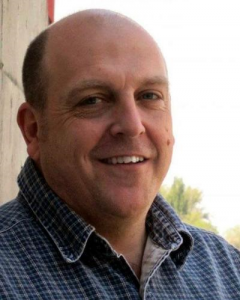
Sympathy to new state Washington Department of Fish and Wildlife director
Dear Mr. Kelly Susewind, Allow me to express my deepest sympathy. .,, You said it was an honor to serve the people of the state of Washington. And you want to “deliver the results they deserve.” That’s scary.,, The orcas are starving from a lack of salmon. So, we shut down the salmon hatcheries and protect the exploding population of sea lions, seals, cormorants and mergansers that eat as many salmon as the orca and humans put together. The surviving salmon are forced to swim through the thousands of tons of pollutants in a chemical stew that we dump into Puget Sound every year, whose ingredients include but are not limited to sewage, drugs, pesticides, herbicides, personal care products and industrial chemicals, while ignoring the impacts on fish, orcas and humans. Pat Neal >click to read<14:59
Washington Department of Fish and Wildlife names Kelly Susewind new director – >click to read<
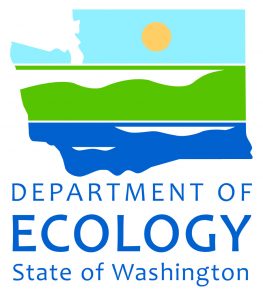
New rule: “no discharge zone” bans vessels from releasing sewage into Puget Sound
Recreational and commercial vessels will not be able to release treated or untreated sewage into Puget Sound waters under new rules approved by the state aimed at improving water quality. The Department of Ecology on Monday officially designated a new “no discharge zone” in Puget Sound to protect shellfish beds, public beaches and sensitive marine environments from harmful bacteria. There are dozens of such zones across the country, but this is the first in the Pacific Northwest. The state estimates about 215 commercial vessels and 2,000 recreational boats >click to read<16:30
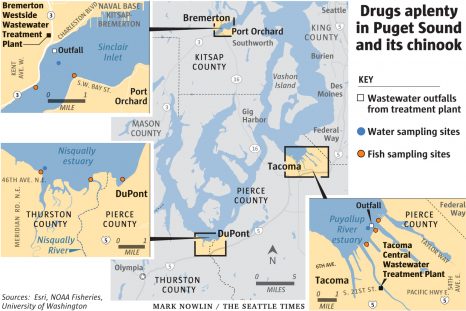
Puget Sound salmon do drugs, which may hurt their survival
Anti-depressants. Diabetes drugs. High-blood-pressure medication. Puget Sound chinook are doing our drugs, and it may be hurting them, new research shows. The metabolic disturbance evident in the fish from human drugs was severe enough that it may result not only in failure to thrive but early mortality and an inability to compete for food and habitat. The research built on earlier work, published in 2016, that showed juvenile Puget Sound chinook and Pacific staghorn sculpin are packing drugs including Prozac, Advil, Benadryl, and Lipitor among dozens of other drugs present in tainted wastewater discharge. >click to read<12:50

New Washington directive aims to help endangered orcas
With the number of endangered Puget Sound orcas at a 30-year low, Washington Gov. Jay Inslee on Wednesday signed an executive order directing state agencies to take immediate and longer-term steps to protect the struggling whales. The fish-eating mammals, also known as killer whales, that spend time in Puget Sound have struggled for years because of lack of food, pollution, noise and disturbances from vessel traffic. There are now just 76, down from 98 in 1995. Inslee said the orcas are in trouble and called on everyone in the state to do their part. >click to read<20:49

This Is Why You Don’t See People-Sized Salmon Anymore
While the orcas of Puget Sound are sliding toward extinction, orcas farther north have been expanding their numbers. Their burgeoning hunger for big fish may be causing the killer whales’ main prey, chinook salmon, to shrink up and down the West Coast. Chinook salmon are also known as kings: the biggest of all salmon. They used to grow so enormous that it’s hard now to believe the old photos in which fishermen stand next to chinooks almost as tall as they are, sometimes weighing 100 pounds or more. >click to read<11:06
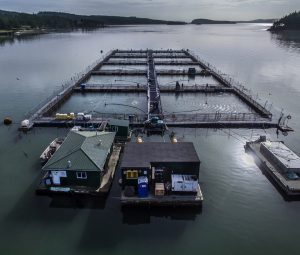
Puget Sound region’s Atlantic salmon fish farms could be headed for final harvest
The salmon-farming industry in the United States got its start right here in the Puget Sound region in the 1970s with experiments to raise salmon perfectly pan-sized or just right to fit the slot of a TV dinner. Union Carbide, then Campbell’s Soup, and a string of other entrepreneurs eventually decided docile, domesticated Atlantic salmon fattened up fastest and best in the open-water net pens they were test-piloting in Puget Sound. The industry really took off when federal fisheries scientists, with more than 1 million jilted Atlantic salmon eggs intended for restocking depleted East Coast streams, instead gave them to private industry. >click to read< 10:27
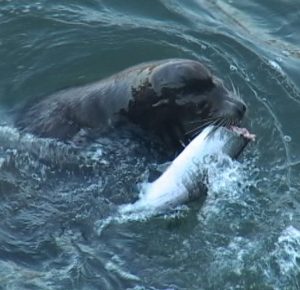
Letter: Predators prevent salmon, southern resident orca recovery
Seal and sea lion population explosions along the West Coast and particularly in our Salish Sea region have corresponded with the declines of salmon and steelhead runs. Per recent reports from the Puget Sound Institute, these mammals take six times as many Chinook as tribal, recreational and commercial fishers combined in Puget Sound alone. That doesn’t even include predation by birds, fish, whales and other animals.,, H.R. 2083 (the Endangered Salmon and Fisheries Predation Act) seeks further control of California sea lion populations in the Columbia River. >click to read< 10:24
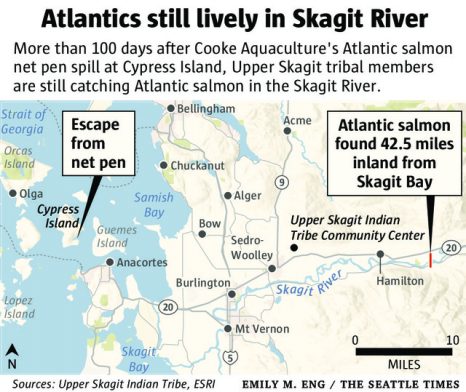
Escaped Atlantic salmon found 42 miles up Skagit River
Strong, silvery and feisty, the Atlantic salmon hit the boat deck, thrashing and thumping. It was the sixth one the Upper Skagit Indian fishing crew caught that day. More than three months after a massive escape of Atlantic salmon from Cooke Aquaculture’s net pen at Cypress Island, Atlantics are still turning up very much alive in the Skagit River, one of Washington’s premier Pacific salmon strongholds.,, Caught more than 42 miles up the Skagit in a brief fishery in just a short stretch of river, those Atlantics were surely not the only ones in the river or the region, said Scott Schuyler, natural-resources director for the Upper Skagit Indian Tribe, based in Sedro-Woolley. 11 photo’s click here to read the story 18:19
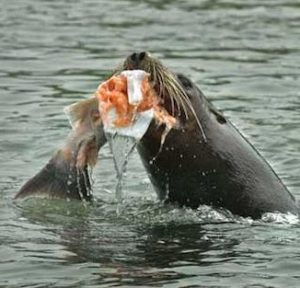
Endangered orcas compete with seals, sea lions for salmon
Harbor seals, sea lions and some fish-eating killer whales have been rebounding along the Northeast Pacific Ocean in recent decades. But that boom has come with a trade-off: They’re devouring more of the salmon prized by a unique but fragile population of endangered orcas. Competition with other marine mammals for the same food may be a bigger problem than fishing, at least in recent years, for southern resident killer whales that spend time in Washington state’s Puget Sound, a new study suggests. click here to read the story 07:43






